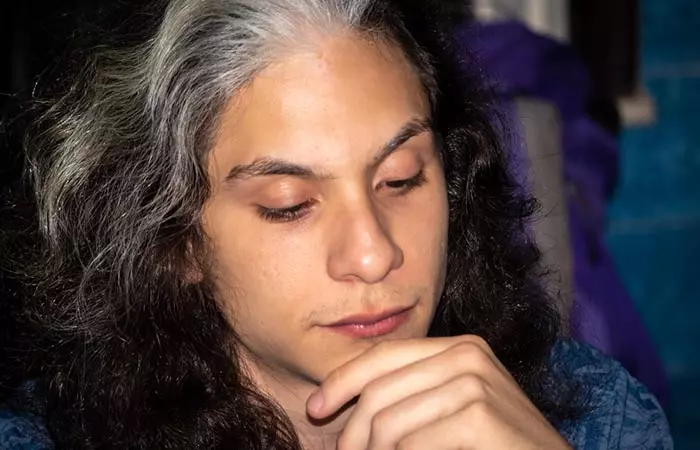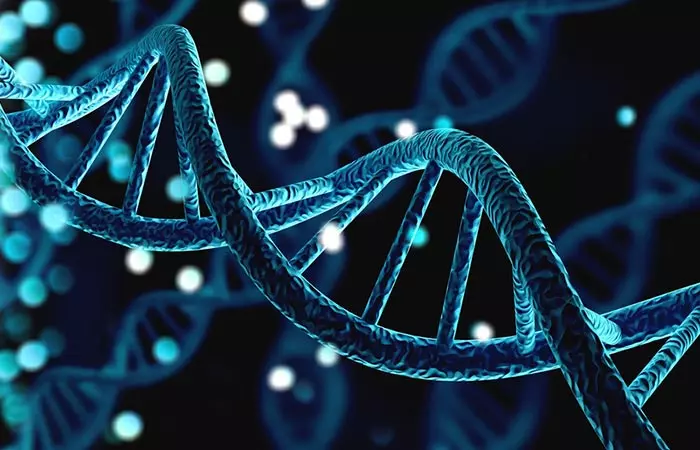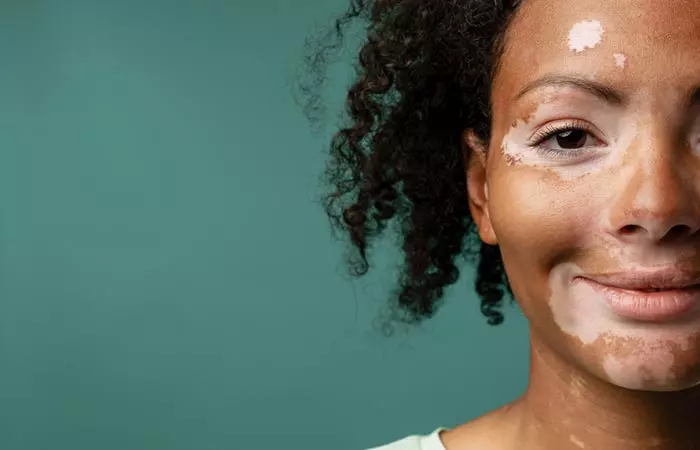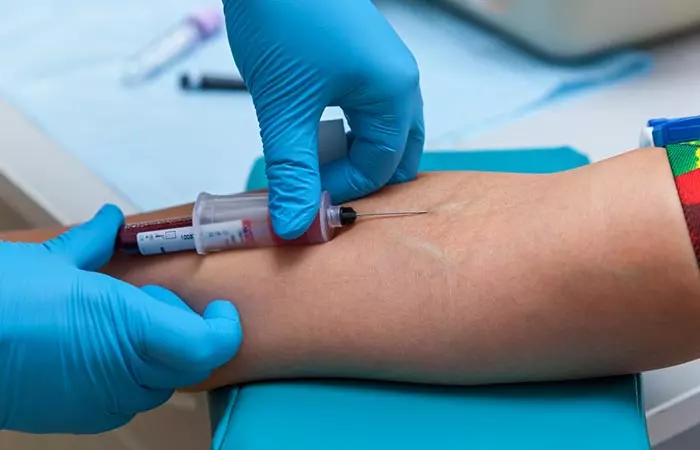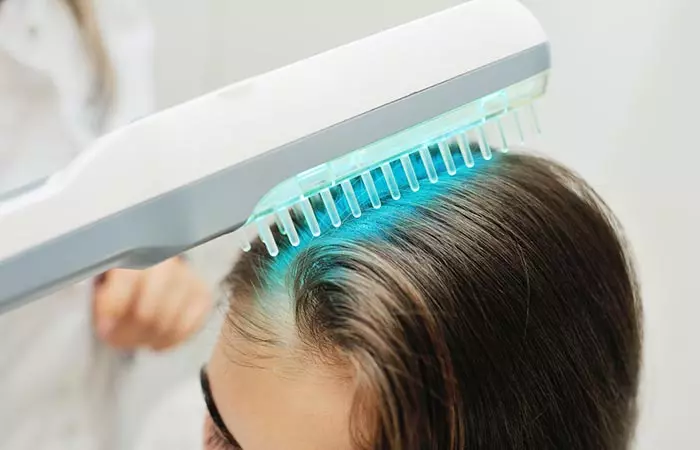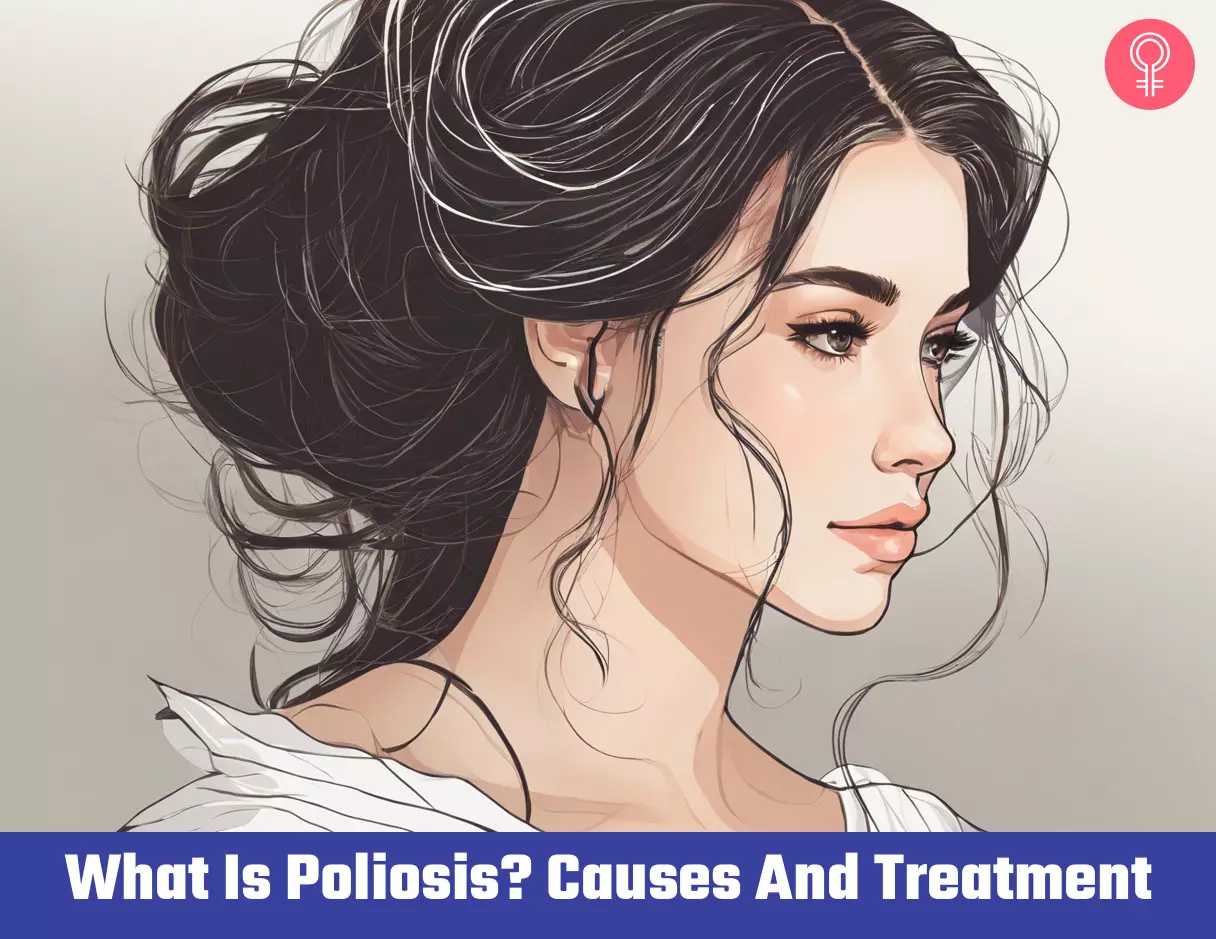What Is Poliosis Or White Hair Patch?
Poliosis is a localized patch of white hair, also known as white forelock. It develops due to a discoloration caused by the absence of melanin (1). Poliosis is a harmless hair disorder that will not jeopardize your health. But it can be a symptom of a serious underlying medical condition like chronic inflammation, vitiligo, melanomai A type of skin cancer that occurs due to cancer in the pigment-producing melanocytes that grows and spreads quickly. skin cancer, or thyroid disorders. Depending on the underlying cause of this de-pigmentation, poliosis can be short-term or long-term. It can be found in people of all ages, irrespective of gender.
Different Types Of Poliosis
What Are The Causes Of Poliosis?
There are various causes behind the formation of white hair patches on the scalp (2), (3).
Genetic Disorders: Poliosis can be caused due to hereditary or genetic disorders like piebaldism, Waardenburg’s syndrome, Marfan’s syndrome, tuberous sclerosis, Vogt-Koyanagi-Harada (VKH) syndrome, giant congenital nevus, and Alessandrini syndrome.
Autoimmune Diseases: Autoimmune diseases can cause a loss of melanin pigmentation. Conditions like vitiligo, hypogonadism, hypopituitarism, skin cancer, thyroid diseases, sarcoidosis, GAPO syndrome, neurofibromatosis, idiopathic uveitis, intradermal nevus, post-inflammatory dermatoses, halo nevus, post-trauma, and pernicious anemia, often co-occur with poliosis.
Others: Poliosis has also been connected to inflammatory, benign, and malignant neoplastic entitiesi Abnormal growth of tissue leading to cancerous or non-cancerous tumors. They can grow anywhere on the body. (2). It may also connected to alopecia areata, melanoma, herpes zoster (shingles), halo molesi Non-cancerous moles that have a ring-like halo around them. The ring is caused due to depigmentation. , radiotherapy, hypo or hyperpigmentation of eyes, melanization defects, Rubinstein-Taybi syndrome, dermatitis, albino, leprosy, injuries, aging, stress, and certain drugs.
In a study conducted on 479 subjects with alopecia areata, it was reported that 29.4% presented with poliosis. It was also observed that participants who had poliosis were of average age 47.7. It is important to know the cause of poliosis as it can help in managing the condition better.
How Is The Condition Diagnosed?
White hair patches are a clear and definitive sign of poliosis. As this hair disorder is not associated with a single medical condition, it is important to go for a thorough check-up for proper diagnosis. If a child develops patchy white hair, it can be diagnosed as poliosis, as white hair is uncommon in kids. Getting a check-up is imperative as poliosis can be a sign of a serious medical condition like inflammation or skin cancer. The healthcare professional will go through the detailed medical history, genetics and family record of the patient. Subsequently, the following assessments will be carried out:
Complete physical inspection Nutritional survey Endocrine surveyi Diagnostic tests conducted to analyze the levels of various hormones and their activity in the human body. Blood test Analysis of a skin sample Neurological causes
Jane Milne, a blogger, writes about being diagnosed with poliosis. She shares that the first time she noticed white hair patches was post the birth of her daughter, writing, “Within weeks of the birth, my hair started to fall out in little clumps. I’m lucky to have very thick hair so the little patches of thinning weren’t really noticeable. Even when the big clump at the right hand side of my hairline at the top of my forehead came out, it wasn’t too noticeable because of the hairstyle I was fashioning at the time (i).”
Is There Any Effective Treatment?
Although there are not many treatment options available for poliosis, there are some viable treatments to reverse poliosis when paired with other ailments. You can also make sure to take certain vitamins to reverse gray hair to reduce its appearance such as vitamins D, B5, and B12. Research shows that skin grafting, followed by light therapy can reverse poliosis related to vitiligo (4). Another study conducted in 2016 showed that laser therapy sessions paired with daily oral medication might bring back 75% of the color in affected areas over a period of six months (5). Treatment for hereditary poliosis is yet to be discovered. Since poliosis itself is not a serious cause of concern, most people simply dye their hair to cover the white patches. Anecdotal evidence suggests that taking steps, like reducing stress and eating healthy, to prevent premature graying of hair can also reduce patchy hair. Another common question that is often asked is whether poliosis is contagious. Scroll down to find out more.
Does Poliosis Spread?
Poliosis is a rare chronic condition that can be congenital or acquired as a symptom of other underlying health issues, but it is not contagious. The condition itself does not spread from one individual to another. It cannot transfer through physical contact, airborne particles, or any other mode. The development of poliosis depends solely on internal factors. Is poliosis rare? Yes. Poliosis is rare. It has been documented to affect 1 in 40,000 people. Is poliosis vitiligo? No. Poliosis and vitiligo are different conditions. Poliosis is the lack of melanin and melanocytes in hair follicles. Vitiligo is the lack of melanin in the skin. However, poliosis and vitiligo may co-occur. Can poliosis cause blonde patches on hair? Yes. Poliosis usually causes white streaks or patches on hair, but some people may also notice blonde streaks or hair patches.
Illustration: What Is Poliosis? Causes And Treatment
Poliosis is caused by a lack of melanin production in the hair follicles. Learn more about the causes and treatments of this condition from the video below.
